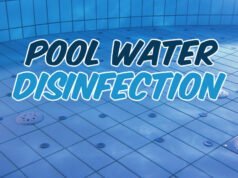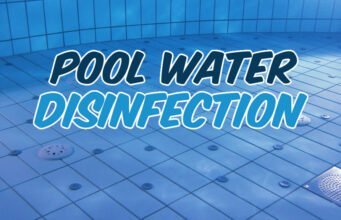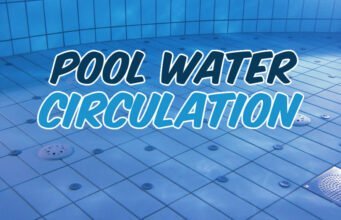We have already talked in other publications about the importance of pool filters. Like filtration, circulation and disinfection are essential points for pool health.
If the pool filter were the size of the pool itself, a system to circulate the water would not be necessary.
If the pool were flowing water, like a river, it would not be necessary to chlorinate the water to prevent the development of algae and bacteria!
Thus, we have identified the pillars for pool health:
- Filtration
- Circulation
- Disinfection
It is necessary to find a balance and not neglect any of these three pillars so that the pool always remains in usable condition without risking the health of swimmers or equipment damage.
Cloudy, opaque, greenish or otherwise visibly problematic pools actually have inefficiencies in at least one of these pillars:
- either filtration is not being done efficiently;
- or water circulation is compromised;
- or disinfection is weak.
In this text, we want to talk a little about this first pillar: filtration.
Pool Filtration
Filtration is usually done by a sand filter. There are those who use fabric filters, cartridge filters, but in general, the most used (and efficient) are the sand filters. (We excluded some types of filters here to avoid fatigue, ok?)
When it comes to filters, the first thing you need to ask yourself is this:
IS MY FILTER TOO SMALL FOR THE POOL?
Size isn’t everything, but when it comes to pool filters, bigger filters are better!
If you use cartridge filters, you need to know that as it gets older, with each filtration, it loses efficiency and ends up allowing larger impurities to pass.
In sand filters, we have similar problems: with the settling of the sand inside the filter body, channels or paths are created where water flows more easily, allowing some particles of dirt to return to the pool.
The special sand for filters also, as it ages, loses its granulometry and has increasingly rounded grains, which also impairs pool filtration.
If your pool pump is too powerful, it ends up pushing too much water through the cartridge or sand, which also favors the return of dirt to the pool.
If the sand filter normally retains dirt up to 20 microns, with excess pressure, impurities of up to 50 microns can return to the pool as if there was no filtration.
OUR EYES BEGIN TO SEE DIRT PARTICLES FROM 30 MICRONS
Filtration-related tips
The size of the filter
With a large filter, or, as we like to say, oversized, you save by having to backwash less and also in the amount of chlorine you need to put in the pool, since it will be in contact with a smaller amount of dirt.
The age of the filter sand
Replace the filter sand at least every two years, or when you notice that even after backwashing the dirt is returning to the pool more quickly than it normally would.
Replacing the filter sand is simple!
Contact a company specialized in pool equipment and they will solve the problem quickly!
Depending on the size and age of the filter, the work can be heavy.
The age of the filter cartridge
Replace the filter cartridge annually or, depending on the pool usage, every six months.
When backwashing the filter seems necessary every two days, it’s probably time to replace the cartridge with a new one.
Use the filter gauge
The filter gauge is not in the pool filter by chance! Use it to check the need to backwash the filter.
Although they are reliable, they can present defects, especially because they can be made of iron and tend to rust. Check if, after backwashing, the pressure shown decreases. If the gauge presents problems, request a visit from a technician to make the replacement!
Check the integrity of the filter
Take a look at all aspects of the filter. Look for leaks, problems in the gauge, in the valve, in the registers, and so on.
Relying on a specialized company for this can also help identify problems early on.
A WELL-DIMENSIONED FILTER SHOULD BE ABLE TO FILTER YOUR POOL IN NO MORE THAN FOUR OR FIVE HOURS.
Despite manufacturers insisting that the filter that serves your pool should filter it in up to twelve hours, our recommendation is always to opt for a bigger filter, much bigger than what they say.
Anyway, this amount of time will vary according to circulation, right?
Follow our entire series and learn more about the other two pillars of pool cleaning.
Remember:
- Filtration
- Circulation
- Disinfection
We hope you enjoyed the text about pool filtration and that it helped you understand why filtration is one of the necessary pillars for a crystal-clear and healthy pool. If you liked it, click on “like” down below. It helps us a lot! Like our Facebook page to follow us.
And finally, to learn more about the filtering system, check out these other texts:
- The importance of the filter
- Tips for handling the pool filter
- How to keep the sand filter of the pool up to date
- Pool filter sand replacement
- How many hours a day should I filter the pool?








